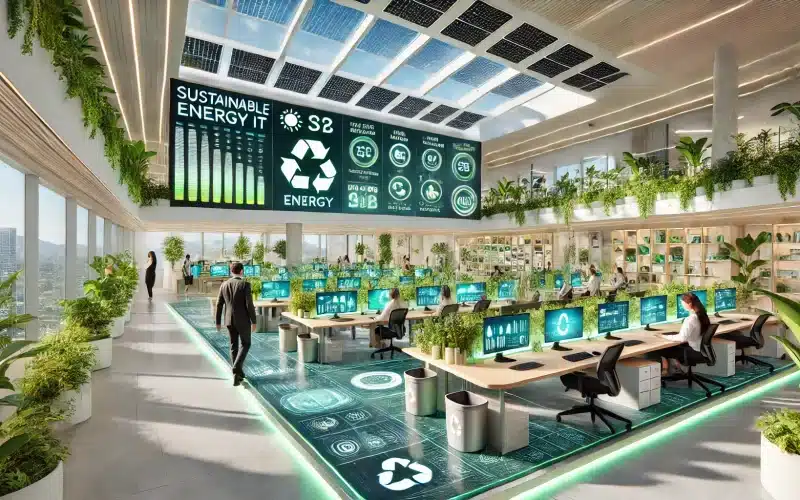
Sustainability has become a crucial consideration in technology as organizations strive to reduce their carbon footprint and promote eco-friendly practices. Especially sustainable IT solutions offer a promising path. However, despite their potential, these green tech options remain underutilized, primarily due to higher upfront costs and a lack of comprehensive emissions data from vendors.
In this article we explore the benefits, challenges, and cost implications of adopting sustainable IT solutions.
Sustainable IT Not Fully Adopted
According to a recent Gartner report, fewer than one in three organizations have adopted sustainable IT practices. This underutilization persists despite the clear benefits of cost savings and reduced environmental impact. Transparency in emissions performance data is a significant hurdle, with 64% of surveyed executive leaders indicating they do not receive adequate information from vendors to make informed decisions.
In connection with this, check out this video about the “Sustainable IT Framework” crafted in collaboration with the Green Computing Foundation.
And now let’s have a look at what is available as far as sustainable IT goes.
Key Sustainable IT Solutions
1. Data Center Efficiency:
- UPS Rightsizing and Advanced Cooling: Techniques such as immersion cooling, passive cooling, and direct-to-chip cooling can significantly reduce greenhouse gas emissions in data centers. Schneider Electric’s EcoStruxure™ platform, for example, optimizes energy consumption and minimizes waste, leading to substantial operational cost savings.
- Modular Data Centers: These prefabricated units are designed for optimal energy use and scalability, offering flexibility to meet growing data demands while maintaining energy efficiency.
2. Digital Workplace Initiatives:
- Circularity Practices: Incorporating refurbished IT assets helps minimize e-waste and prolongs device lifecycles. This approach not only reduces emissions but also cuts costs associated with frequent hardware replacements.
- Energy-Efficient Hardware: Low-power processors and solid-state drives (SSDs) consume less energy than traditional hardware, contributing to lower operational costs and a reduced carbon footprint.
3. Renewable Energy Integration:
- Renewable Energy Certificates (RECs): Data centers can purchase RECs to support the use of renewable energy sources like solar and wind, significantly cutting their carbon footprint.
4. Data Center Infrastructure Management (DCIM) Tools:
- AI-Powered Forecasting: DCIM tools use AI to optimize workloads and cooling strategies, ensuring efficient power use and helping track sustainability metrics like Power Usage Effectiveness (PUE) and carbon emissions.
Cost Implications of Sustainable IT
The transition to sustainable IT solutions involves higher initial costs. Premium raw materials, research and innovation, and certification requirements contribute to these expenses. For example, sustainable products can be 10%-15% more expensive than non-sustainable alternatives due to higher quality materials and ethical manufacturing practices.
However, the long-term savings are significant. Energy-efficient systems like Schneider Electric’s EcoStruxure™ and modular data centers reduce operational costs by optimizing energy use. These solutions also extend the lifespan of IT assets, reducing the need for frequent replacements and maintenance.
Moreover, and that’s a plus, organizations that adopt sustainable practices often benefit from enhanced brand reputation and increased market share among eco-conscious consumers.
Adopting Sustainable IT Solutions: Not Just a Trend but a Necessity
Adopting sustainable IT solutions is not just a trend but a necessity for future-proofing operations and mitigating environmental impact. While the initial costs may be higher, the long-term benefits in terms of cost savings, energy efficiency, and brand reputation make it a worthy investment. As the demand for sustainable practices grows, these technologies will become more accessible and cost-effective, paving the way for a greener, more sustainable future.
The key is to overcome initial barriers and recognize the long-term value of investing in green technologies.
